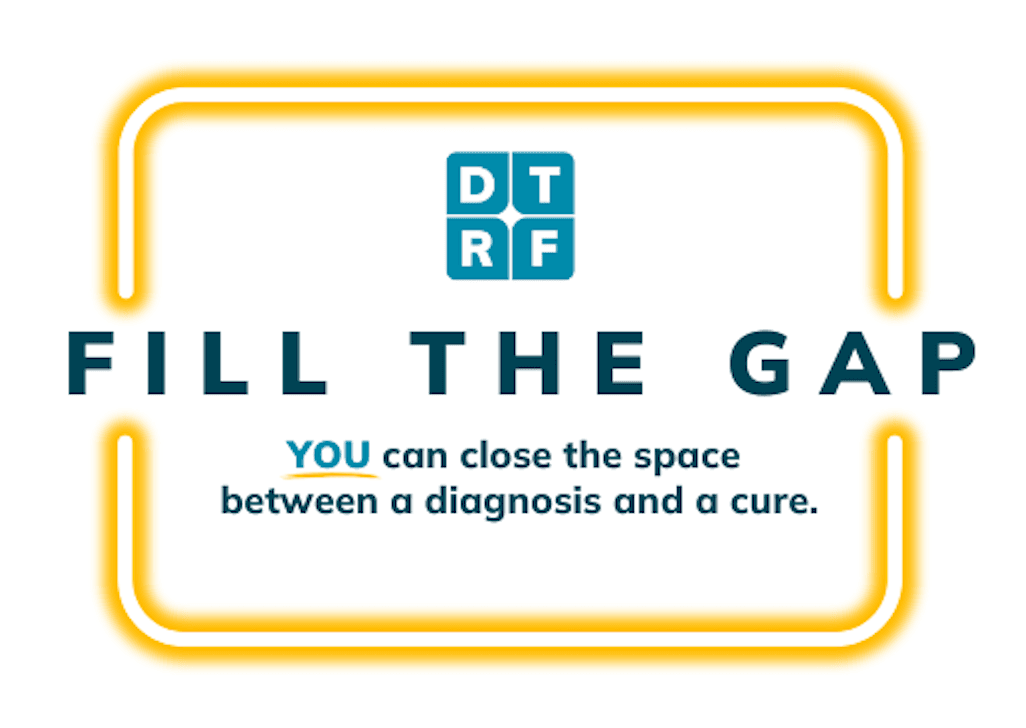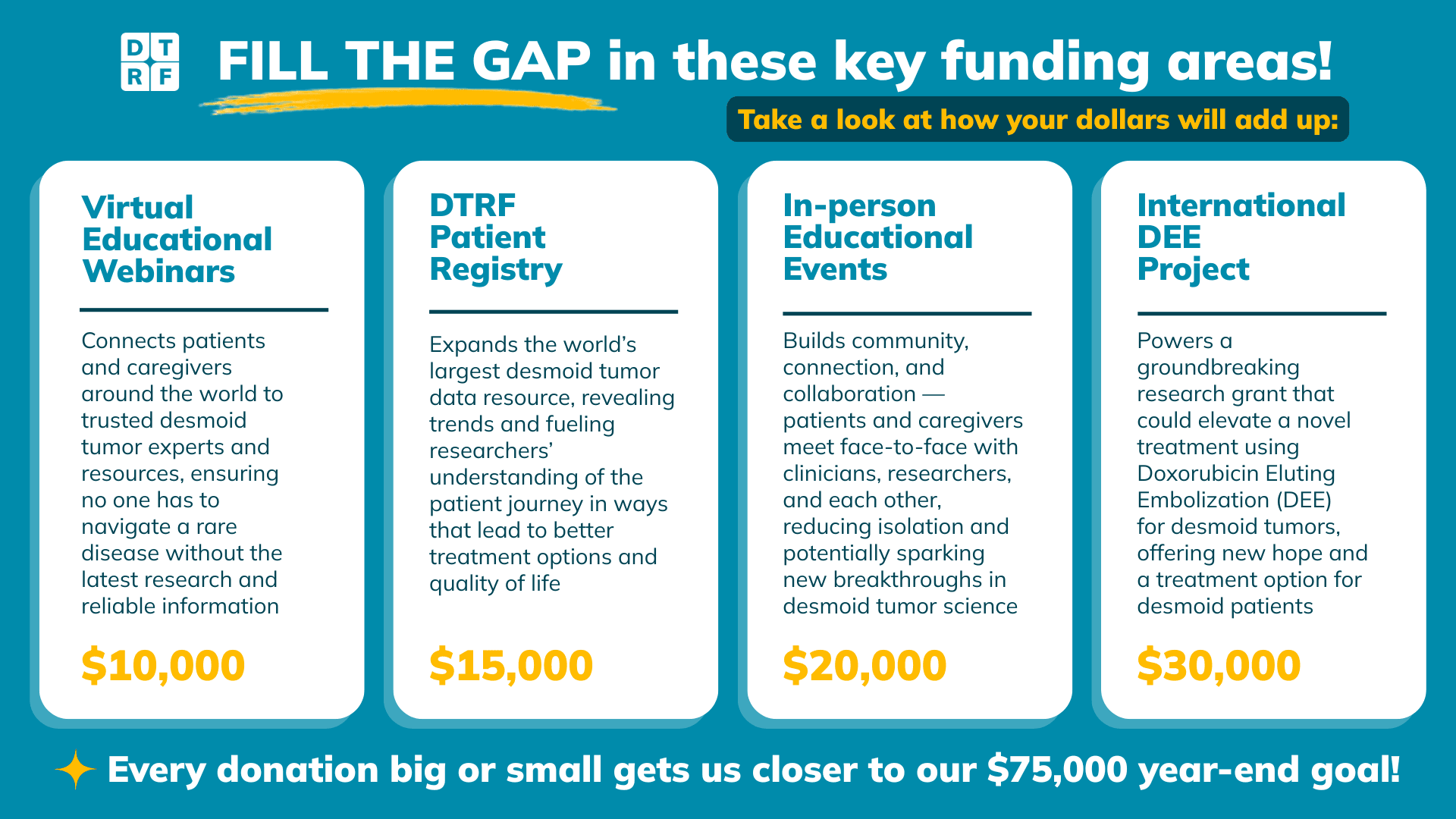
✨ Help us reach our year-end goal. A generous donor will match donations up to $25,000!
Your dollars create real impact.
At the Desmoid Tumor Research Foundation (DTRF), we’ve made groundbreaking progress—but critical funding gaps still exist.
At the end of 2025, we’re calling on you to Fill the Gap.
Your donation helps fund research that brings new treatments to light. It fuels collaborations between scientists, doctors, and patients worldwide. It shortens the time between uncertainty and understanding, and brings us one step closer to a cure for desmoid tumors.
This is the moment to act.
Because the difference between waiting and progress—between hope and healing—is YOU.
Watch Jason's story.
For the past seven years, Jason—a desmoid tumor patient and DTRF Board Member, has been "Filling the Gap" by hosting an annual golf event to support our mission.
Over the past year, Jason realized just how crucial his event's donations have been to accelerating desmoid tumor research around the world.

Learn more about the
Int'l DEE Project:
The DTRF aggressively funds desmoid tumor research each year to accelerate the development of improved therapies and drive collaborations among clinicians and researchers worldwide.
Watch Dr. Eldad Elnekave's video and read the grant's lay abstract to learn more about this promising treatment technique.
Support the
DTRF Patient Registry:
Watch a short message from Dr. Kelly Mercier, Principal Investigator of the DTRF Patient Registry & Natural History Study.
The primary aim of the DTRF Patient Registry at DTRF.iamrare.org is to conduct a prospectively-planned and efficient Natural History Study (NHS) that will result in the most comprehensive understanding of the disease, its course and pace over time.
Share Joy's message.
There’s a gap that only you can fill.
A gap between a patient and a diagnosis.
Between a researcher and a breakthrough.
Between living with uncertainty—and living with options.
Desmoid tumors are rare, but the needs are very real.
Most patients face misdiagnosis, limited treatments, and few doctors who understand what they're going through.
This is where you come in.
